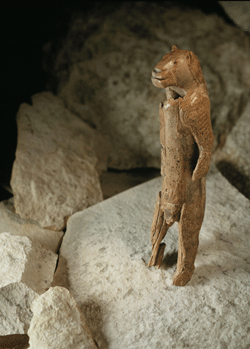Manetho was an Egyptian priest who lived in the 3c B.C. and wrote one or more books in Greek to acquaint the Mediterranean world with the history and civilization of his country. His original works have perished; what has survived has been transmitted to us as fragments in about a dozen ancient authors, the most important of whom are Josephus, who quotes long passages of connected discourse, and Eusebius and the Christian chronographer Africanus, who for the most part have preserved dry lists of Egyptian kings, grouped by "Dynasties" and only infrequently relieved by a bit of context.
For many centuries — once the knowledge of hieroglyphics had been lost — the writings of Manetho, mangled as they are, were one of the world's chief sources of information on Egyptian history; only with the 19c decipherment of hieroglyphics and archaeological investigations was Manetho slowly superseded in favor of first-hand knowledge from the papyri and tombs of Egypt themselves.
In the course of my transcription, though, I came to realize how much we owe even now to this ancient author: the entire framework of Egyptian history as we are used to it (the Kingdoms, the Dynasties) is as recorded by Manetho; and he served those 19c archaeologists, and continues to serve archaeologists today, as a guide. And dull as those dry lists of names and numbers are, in the varying corrupted forms preserved to us, chronologists and Biblical students also continue to find them of use.




